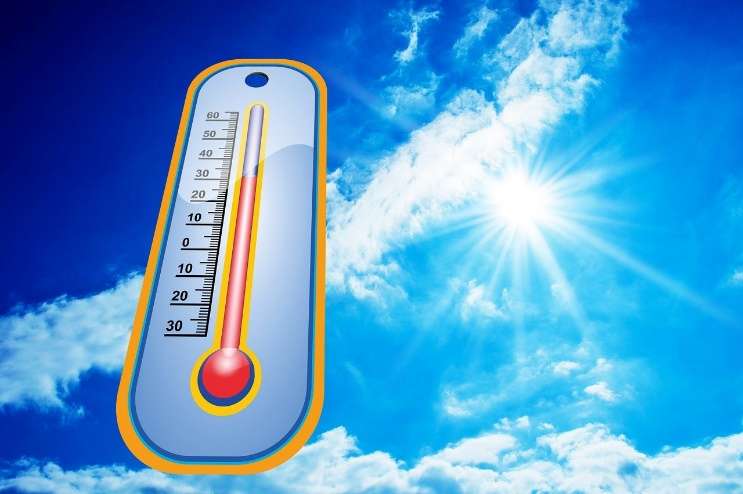About one in five Americans - around 70 million people - are living under heat alerts, with temperatures expected to soar.
People in the north-east and Midwest have been told to prepare for days of extreme heat, with temperatures of 105F (41C) possible in some areas.
Elsewhere in the country, firefighters are battling a wildfire north of Los Angeles that has forced hundreds of people to leave their homes.
Scientists say extreme weather events are becoming more frequent and intense as a result of climate change.
The National Weather Service (NWS) has described this week's expected extreme temperatures as the region's first significant heatwave of the season.
In its latest update on X, it said the Midwest, Great Lakes, Northeast and Mid-Atlantic regions could all be affected until next week.
"The longevity of dangerous heat forecasted for some locations has not been experienced in decades," its post read.
The weather service said the heatwave would expand from the centre of the US across the Midwest and into north-eastern US, where it would last until Saturday.
The extreme heat has been brought on by a "heat dome" - where a high pressure system hovers over the same area for a long time, trapping warm air underneath.
Thermometers could top 105F (41C) and some farming areas could experience drought, the NWS added.
A record temperature could be set in Pittsburgh, Pennsylvania, on 17 June, where the forecast is 97F.
Detroit could experience its hottest day for 12 years, with a forecast temperature of 96F on Monday.
Temperatures in the high 90s are also forecast for several major cities on the East Coast, including New York, Philadelphia and Washington.
Officials advise those in affected areas to limit outdoor activity and stay hydrated.
Extreme heat is the most deadly of all weather conditions, according to experts.
Across the US in California, a wildfire north of Los Angeles known as the Post Fire has so far burned about 15,000 acres (6,070 hectares) of land.
It is only 2% contained, according to the Cal Fire website. Hundreds of people have been forced to leave their homes.
Earlier this month, daily records were broken during another wave in the Southwest - two weeks before the official start of summer.
Triple-digit readings were logged in locations including Phoenix.
Heatwaves have become more frequent and more intense globally since 1950, says the UN’s climate body, the Intergovernmental Panel on Climate Change (IPCC).
That is because of human-caused climate change, which is fuelled by activities like burning fossil fuels and cutting down forests.
Hot extremes will happen even more often - and tend to reach higher temperatures – for as long as the world continues to warm, the IPCC says.
Europe is the fastest warming continent on Earth, with temperatures rising at twice the global average, according to the Copernicus Climate Change Service.
In April, Copernicus highlighted how climate change was already taking its toll on the health of Europeans - pointing to increasing numbers of deaths linked to extreme heat over the last 20 years.








